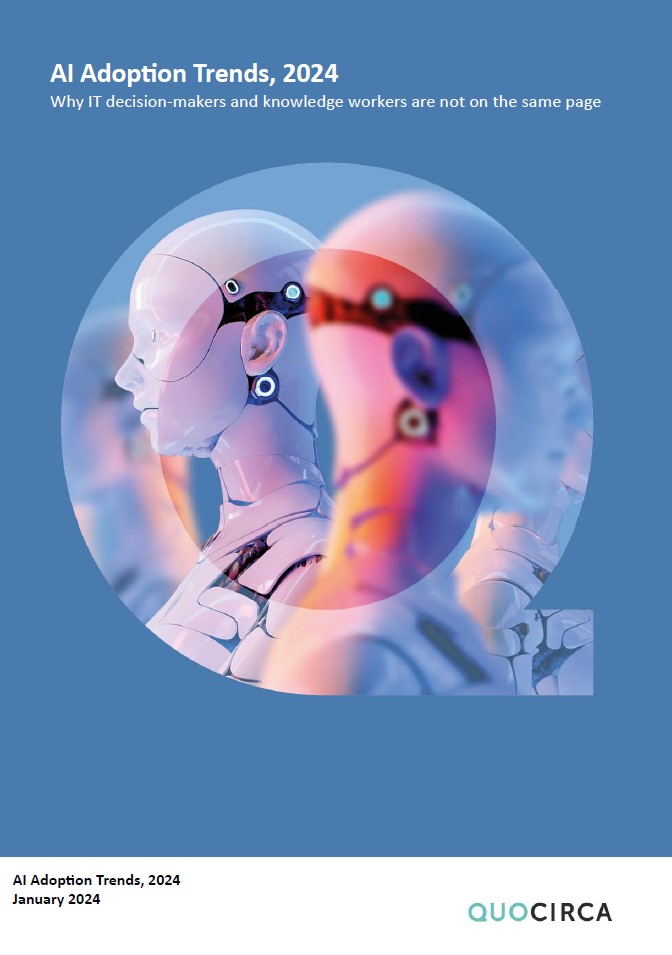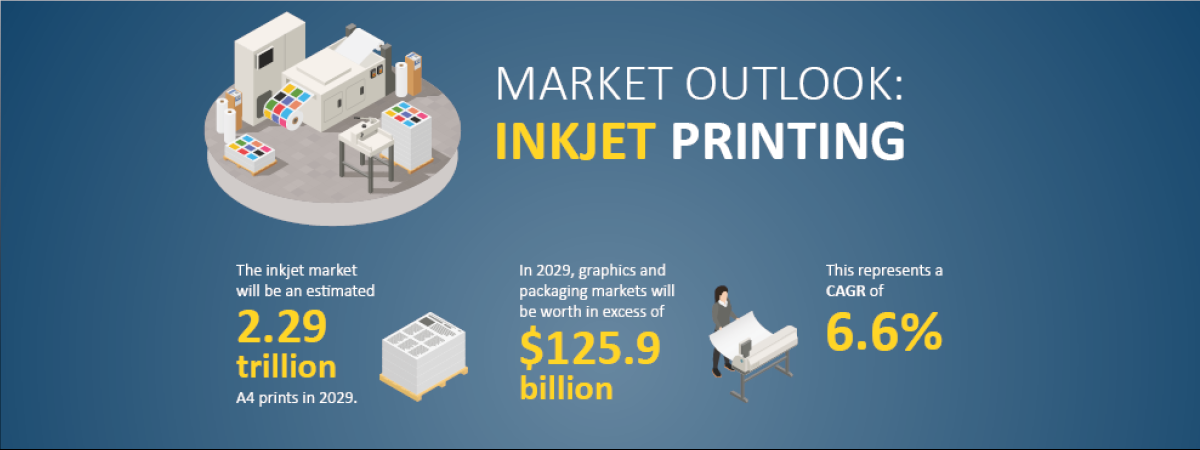January 2024

The AI Divide: Knowledge Workers and IT Decision Makers are at Odds Over AI
84% of businesses plan to increase AI investment in the coming year, but differing views on AI may affect workplace adoption
A new study by Quocirca, a global market insight and research firm specialising in technologies for the future workplace, reveals that while 70% of organisations are using artificial intelligence (AI) in their business, there are significant differences in how knowledge workers and IT decision-makers (ITDMs) perceive and approach AI adoption.
The study, which surveyed 800 respondents from a variety of industries across the UK, France, Germany and the US, found that knowledge workers are less positive about the use of AI than ITDMs, with 21% of ITDMs saying their AI projects have exceeded expectations, compared to only 8% of knowledge workers. More than one third (36%) of knowledge workers believe the top driver for AI adoption is cost reduction, compared to 25% of ITDMs. Knowledge workers are more concerned about the risks of AI, such as job displacement, where 31% say it is a concern compared to just 19% of ITDMs. They also show greater concern about losing control over decision-making, the accuracy of AI, and have more ethical concerns than ITDMs.
"This research reveals a considerable gap in understanding and perception of AI between different stakeholders. Businesses and vendors must work together to bridge this gap if AI is to be adopted in ways that unlock its immense potential."
Louella Fernandes, CEO, Quocirca
The study's findings show the need for better communications between knowledge workers and ITDMs about AI. ITDMs need to be aware of AI's broader potential beyond the standard goals of cost reduction, efficiency. and increased productivity, while knowledge workers need to be assured that AI will not lead to job losses or other organisational risks.
Key takeaways from the study include:
- The AI genie is already out of the bottle. Overall, 70% of respondents state that some form of AI is already used within their organisation, with 30% indicating that AI will be in use within 12 months.
- Generative AI tops the AI priority list for investment (40%), followed by machine learning (32%) and RPA (31%).
- AI investment is set to increase over the coming year. Over the next year, 84% of organisations report that AI investment will either increase significantly (33%) or increase somewhat (51%).
- 79% say their AI deployments have met or exceeded expectations. This rises to 88% of IT decision makers and drops to 70% among knowledge workers.
- Cost reduction (31%), improved customer service (29%), and automation of repetitive tasks (27%) are the top drivers for AI adoption. Knowledge workers place more emphasis on cost reduction (36% compared to 25% of IT Decision Makers) and repetitive task automation (29%).
- IT automation (34%), cybersecurity (30%), quality control, and customer service (both 29%) are the primary use cases for AI.
- IT operations staff are the most likely to be using AI (48%) followed by IT developers (46%) and managers (34%).
- Security and privacy are the dominant concerns (31%).
- Concern about AI-powered decisions being wrong (28%) is the second most common concern.
- Cost is the biggest barrier to AI implementation (23%) followed by regulatory concern (22%) and a lack of skilled staff (22%).
- One quarter of respondents are worried about job displacement. This is felt particularly strongly among knowledge workers, with 31% listing this as a major concern compared with just 19% of ITDMs.
Louella Fernandes comments:
"Knowledge Workers are typically more closely involved in day-to-day operations and are therefore more likely to be aware of the potential cost savings achievable from specific task automation than their counterparts in IT. However, overall IT is leading the AI adoption drive, with IT automation and cybersecurity the leading use cases, and operations and development teams most likely to be using AI already.
"Organisations should foster a culture of collaboration between ITDMs and knowledge workers so they can harness the power of AI while mitigating the potential negative impact. At the same time, technology vendors need to ensure their messaging and positioning of AI- driven offerings recognises that the market is very much in its infancy and levels of knowledge and experience regarding AI vary considerably between and within organisations."
Quocirca's AI Adoption Trends 2024 also focuses on the impact of AI on the print industry, exploring key use cases and user expectations. It contains key recommendations for technology vendors seeking to capitalise on AI opportunities in the year ahead.
Downloads
 Intergraf Economic News (Paper Prices) - March 2024
Intergraf Economic News (Paper Prices) - March 2024
March 2024
Access the latest edition of the Economic Newsletter for the European Printing Industry for data on paper consumption, and pricing data for pulp, paper and recovered paper. Data for packaging papers and board is also available with this edition.
 UK to follow global expansion of inkjet printing
UK to follow global expansion of inkjet printing
March 2024
The latest expert analysis from Smithers identifies the potential of the latest generation of inkjet systems to improve profitability across the global print market. Read more about the new report The Future of Inkjet Printing to 2029.










